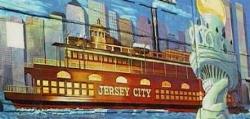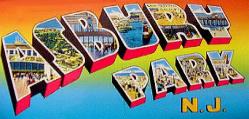 |  |  |
|
| ||
 |  |  |
 |  |  |
|
| ||
 |  |  |
|
|
By Harriet Phillips Eaton
Published 1899
This Web version, edited by GET NJ
COPYRIGHT 2002
On March 18th, 185r, Edwin A. Stevens, Edward Coles, Dudley S. Gregory, Abraham J. Van Boskerck and John D. Ward were appointed a Board of Water Commissioners to supply Hoboken, Van Vorst and Jersey City with pure water. They employed William S. Whitwell as engineer. Numerous plans were suggested but the commissioners decided upon taking the water from the Passaic at Belleville. Mr. Whitwell began the work near Belleville, August 26th, 1851, and submitted his plan on December 9th of the same year. On March 25th, 1852, legislative authority was given to construct the works. Upon June 30th, 1854, water was let into the pipes from Belleville, and on August 15th, distributed through the city. Up to that date the cost was $652,995.73.
At that time ,the water in the Passaic at Belleville was so pure and clear that the stones could be seen at the bottom of the river. At the same time, the board adopted a sewerage plan, a tidal canal from Communipaw Cove to Harsimus Cove, principally along the line of Mill Creek and Hoboken Creek. The scheme provided that it should be open to navigation, and it was believed that factories, lumber, coal, and stone yards would locate along its shores, but it, was never carried out. The water and sewerage questions are still unsolved problems of grave importance in Jersey City.
|
|
|
|
 Your Ancestors' Story |
 Bruce Springsteen's Jersey Shore Rock Haven! |

|
UrbanTimes.com |